
There’s usually a good bit of overlap between our annual best PC games and our overall games of the year lists, but it’s especially extreme this year. Most games are released for computers as well as consoles, but there’s almost always a handful of major exclusives from Nintendo or Sony near the top of our year-end list. That’s not really true this year; although there were definitely good exclusives on the Switch and PlayStation, only a few cracked our top 30 of the year, and mostly in the bottom half of that list. So every game below is also on that overall rundown of the best of the best, and I’m pretty sure that’s the first time that’s ever happened here. Cool. Okay. If you want to find out what Paste believes are the 20 best new games released for PC in 2022, read on. If you thought our main games of the year list was too long by a third and were hoping we’d chop it down by 33%, also read on. It’s the same thing either way. And if you’ve ever wondered if you should invest in a updated gaming computer, well, maybe this is a sign that you should; almost every third party or independent game will be playable on it, and even Sony exclusives often make the jump after a short gap.
20. Teenage Mutant Ninja Turtles: Shredder’s Revenge
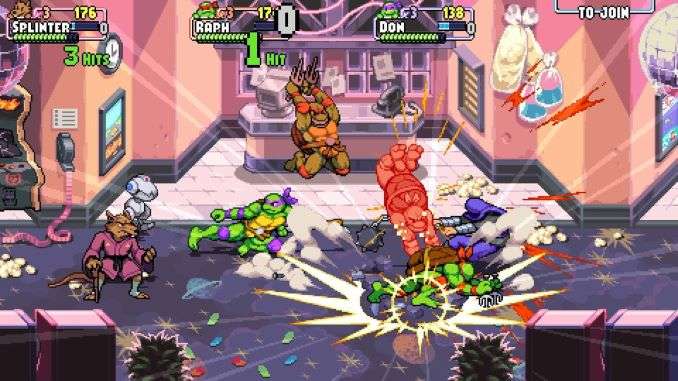
This loving tribute to the multiplayer beat ‘em ups of the late ‘80s and early ‘90s focuses like a laser on the nostalgia of a certain generation. It’s not just that it’s based on the version of the Turtles from the first cartoon and toy series (complete with the original voice actors), the same era that inspired the beloved arcade brawler from 1989; the entire genre is so inherently old-fashioned that it can’t help but feel like some long-lost game from 30 years ago. If you miss teaming up with your friends to bash generic punks and thugs in a cartoonish version of New York City, Shredder’s Revenge will wind back the clock for you. It wouldn’t make this list if it was just nostalgia, though; Shredder’s Revenge adds enough modern tweaks to drag that formula into the 21st century. It’s an example of a game that does what it sets out to do about as well as it possibly could.—Garrett Martin
19. Metal: Hellsinger
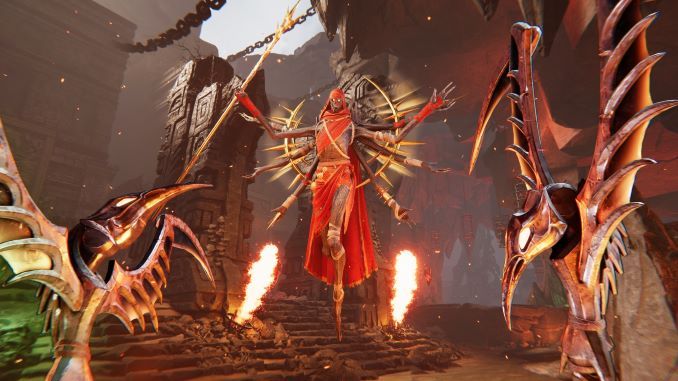
Metal: Hellsinger’s sturdy skeleton props up its metallic flesh and beating heart. Scored with love for the genre it’s named after, each song bangs harder than the last. The songs themselves aren’t just spectacular, but they get why you’re there and actively seek to reward fans of the genre. Being a rhythm game, it only stands to reason that the musical aspects are easily Hellsinger’s’ stand out contribution, but I haven’t played something with music and sound design that bolsters what’s happening in-game this well since 2019’s Wattam. It stands to reason that hitting a shot or a dash on beat feels better than not, but on top of a damage boost and a much more satisfying, crunchy sound effect for your weapon of choice when hitting the beat, Hellsinger makes the deliberate choice to reward you for good play.—Charlie Wacholz
18. Weird West
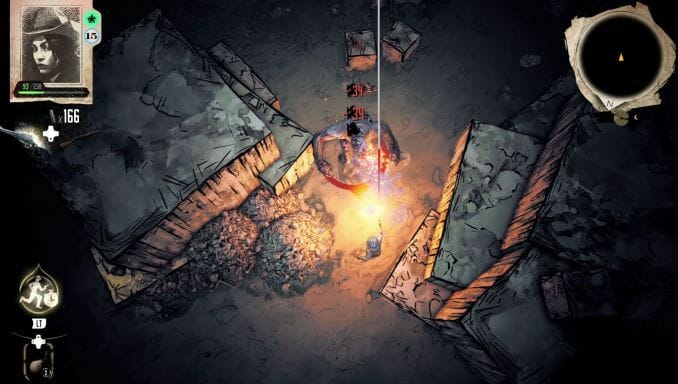
It starts with a familiar enough Western trope. Bandits raid your character’s homestead, killing your child and kidnapping your partner. Instead of working for an evil rancher or railroad man, though, you soon learn the attackers work for man-eating Sirens. Weird West’s world is full of such supernatural horrors, including wraiths and werewolves. Kindly townsfolk and roving robbers are both somewhat acclimated to dealing with these beings, though some civilians have it harder than others. Aside from seeing the setting as an overhead view combination of Dishonored’s steampunk dark magic and Red Dead Redemption’s prestige Spaghetti Western formula, I found myself comparing Weird West to Fallout: New Vegas, which had a Wild Wasteland optional perk setting that tuned up the wackiness. It’s a fun world that ends up being darker and more intense than silly, with humor often coming from absurdity.—Kevin Fox, Jr.
17. PowerWash Simulator

It’s a cliché to admit, but the real thing being power washed when I play this game is my own brain. People joke that when something scratches that specific itch, it makes their brain go “brr,” but I hear the satisfying hiss of a power washer instead. I feel the layers of filth and muck that accrue while I trudge through life simply melt away as I spray down parks, vehicles, and various buildings in alarming states of disarray in PowerWash Simulator. It’s also provided me an alternative from the various fictional war crimes me and my friends frequently commit in other games in our steady rotation. The greatest boon PowerWash Simulator has given me though is this warm feeling that I’m doing something objectively good. And that feels pretty great.—Moises Taveras
16. Trombone Champ
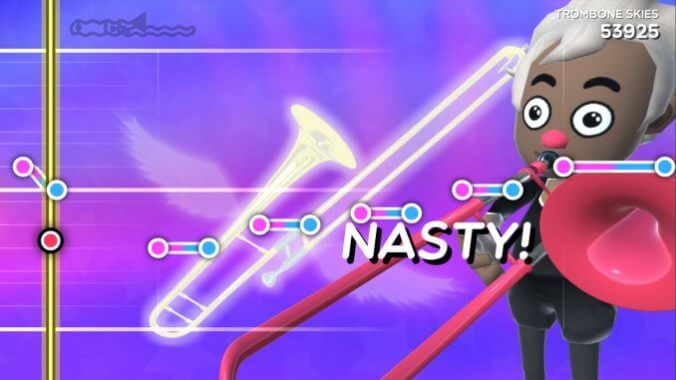
Trombone Champ isn’t just a meme machine. It’s an absurdly difficult rhythm game that’s also perhaps the most potent sight (and sound) gag in videogame history. I couldn’t care less about “doing well” in this game; what makes it great is how ridiculous the game gets when you do badly at it, which will happen pretty much every time you play it. Between the elasticity of the synthetic trombone’s tone, the utter precision required to hit each note, the non sequitur backdrops, and the wide-eyed obliviousness of the cartoon avatar, Trombone Champ is impossibly hard in the name of comedy—something games notoriously struggle with. This champ doesn’t struggle; it’s easily the funniest game of the year. Its spell doesn’t last long, but for an hour or so this is as joyful as videogames get.—Garrett Martin
15. Iron Lung
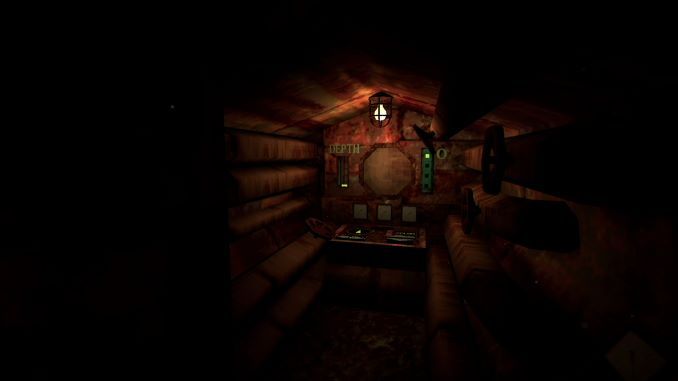
Iron Lung is a concentrated dosage of claustrophobic terror. Set in a tiny rusting submarine, its porthole welded shut to allow travel beyond intended limits, you must blindly navigate deep-sea trenches on an alien moon using only an imprecise radar and an unfinished map. Visual touches communicate how this vessel is being crushed by the depths as pipes burst, oxygen depletes, and blood-red fluids rush in through gaps in the hull. But perhaps most stressful of all is the knowledge that the ship’s fate is entirely in your hands as you’re forced to navigate constrictive passages against a ticking clock. These dire circumstances communicate doom and the grim resignation that comes alongside it, the backstory of this broken world filling in this apocalyptic setting. Altogether, it delivers the kind of unbridled intensity that could only come about in this smaller-sized, more experimental experience. If you like being scared, this is one you don’t want to miss.—Elijah Gonzalez
14. Rogue Legacy 2
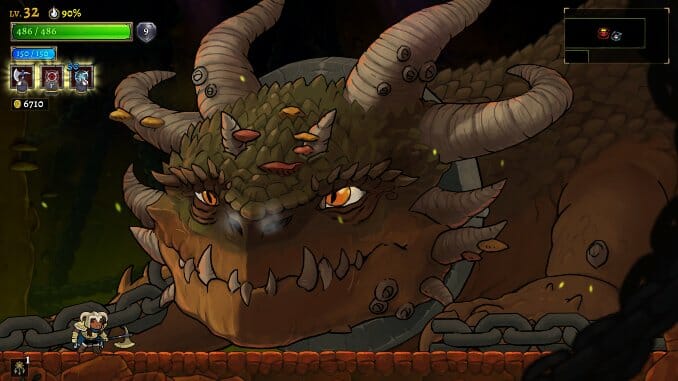
As the successor to one of the games that helped kick off the roguelike craze, Rogue Legacy 2 had big shoes to fill. However, it turns out genre reinvention isn’t necessary when you nail the fundamentals. For starters, the core platforming feels excellent, with an expanding pool of movement abilities and crisp controls that make it empowering to work through screens full of bullets, angry monsters, and environmental hazards. While new areas are initially insurmountably difficult, persistence is rewarded with a deep pool of upgrades that make things more manageable and varied, such as the long list of unlockable classes that enable unique playstyles. It also makes some clever decisions around structure, letting you tackle things in reasonable chunks by turning each region of this cursed castle into a mini-roguelike. And although I’m not sure it will do much for those uninterested in this style of game, its expansive list of accessibility options makes it more approachable than some of its peers. Through its responsive platforming and constantly expanding depth, Rogue Legacy 2 is an excellent example of the genre.—Elijah Gonzalez
13. OlliOlli World
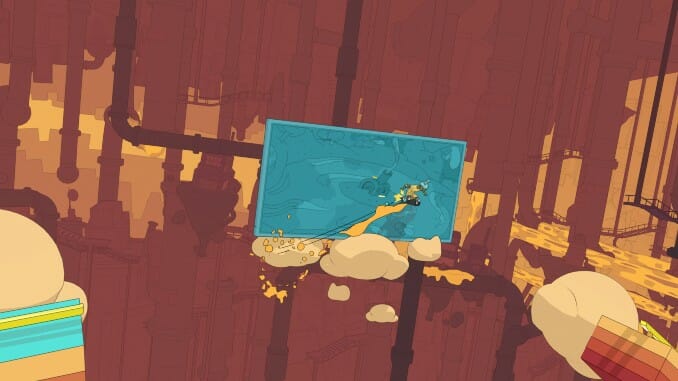
The third in Roll7’s series of arty, lo-fi skateboard games follows the typical trajectory of a videogame series: everything is bigger, longer, deeper. Beefier, even. It has characters. A whole story, even. At its heart it’s still the thumb-aching, quick-twitch trick machine that OlliOlli has always been, but with the narrative and world-building elements expanded so thoroughly that it doesn’t always feel like the elegant puzzle engine it used to be. That’s neither good nor bad—it comes down to your personal tastes—but it’s all done with the same charm and the same cool aesthetic that the series is known for. And given that it’s been seven years since the last time we dipped into a new OlliOlli, this is very cool World is a welcome one indeed.—Garrett Martin
12. I Was a Teenage Exocolonist
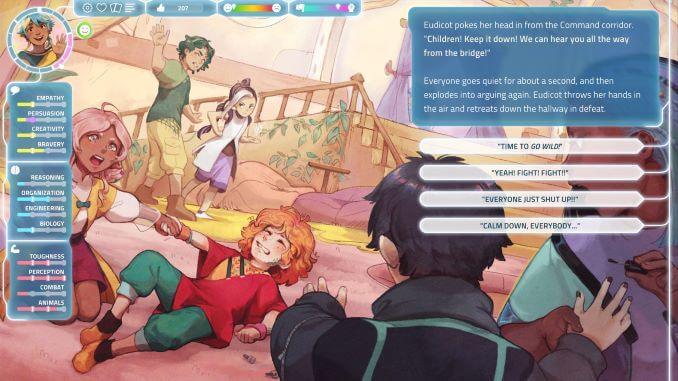
I Was a Teenage Exocolonist is a narrative-oriented life-sim that thoughtfully handles its wide range of ideas, full of sharp commentary and earnestly portrayed characters. As a member of the first generation raised on a distant planet, you witness political tumult and the dangers of your new home as you grapple with the universally awkward experience of growing up. Although its colorful aesthetic may make it seem like a “wholesome game,” it fully engages with the perils of its setting while still communicating the warmth of its characters and their relationships. It envisions what a better future can look like, rendering a post-capitalist commune where its characters question Earth’s regressive practices, but it avoids devolving into utopianism by grappling with the moral ambiguities of this colonial project, as well as the ever-present threat of right-wing reactionism. While its deckbuilding elements become a little stale by its conclusion, it foregrounds substantive choices that directly impact its characters’ fates, placing you at the center of political strife and interesting sociological questions. It’s thoughtful, kind, and just about everything I value in science fiction.—Elijah Gonzalez
11. Stray
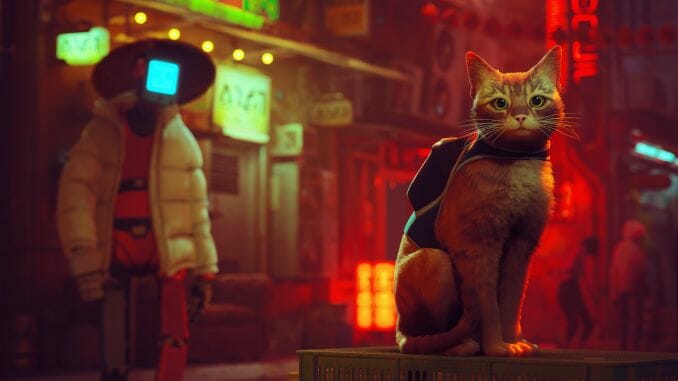
Stray absolutely understands what it’s like to be a cat—at least from a human’s perspective. This cat will scratch on rugs, walls, and furniture. This cat will nonchalantly knock glasses, vases, and even open cans of paint off shelves. This cat will get its head stuck in paper bags, hang out in empty boxes, or idly swat balls back and forth, if you want it to. This cat will even jump onto a table in the middle of a game of dominoes, knocking the pieces all over the floor. It’ll also purr and meow, rub itself lovingly against the legs of those it likes, and even snuggle up against a robot as it takes a nap. Stray captures the mischief, aloofness, and sweetness of a cat, while also uncannily recreating the way they look and move. The cat gets the hype, but it’s the cat’s robot friend that ultimately makes the biggest impression. If B-12 was just a typical guide—a hint system and blinking arrow in character form—Stray wouldn’t work. B-12’s journey of self-discovery is the main emotional through line in the game, the wire upon which the entire experience hangs, and even if you can tell where that story is going before the drone can, it’s told with a clarity and forthrightness that adds to its power. The cat game might be less about the cat and more about the existential crises facing mankind and the artificial intelligences that will be left behind, but at least there’s a dedicated meow button—Garrett Martin
10. Cult of the Lamb
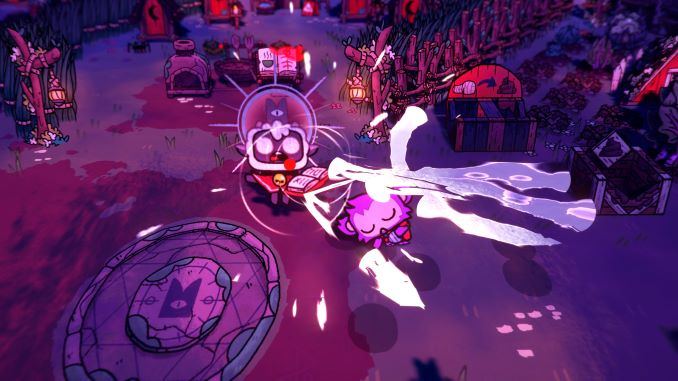
From the very moment Cult of the Lamb begins, players embark on a rollicking, deceptively cute, but ultimately sinister journey through the lands of the Old Faith, and it never lets up. Within seconds of gaining control of the game, the player is executed for being a potential vessel for The One Who Waits, a god who’s been bound by chains. This fallen god saves the player before charging them, a literal sacrificial lamb, with taking up a crown and restoring them to power. From there, players engage in a lot of frankly dubious behavior, indoctrinating dissidents of the Old Faith into a cult and deciding how best to exploit them.
Cult of the Lamb’s greatest strength might be its honesty. Action games are about this absolute physical dominance over other things and people around you, and management sims have always been about pulling on threads and watching systems big and small do your bidding. In a sense, Cult of the Lamb is this wholly self-aware marriage of two distinct, but intrinsically tied, genres about the order of things, and just immediately inserts you at the top of that hierarchy, laying it all bare. It drops all pretenses and weaves conquest and violence of various forms (spiritual, physical, and systemic) into its systems and simple story very satisfyingly. At the end of the day, your cult leader is little but an avatar for destruction masquerading as a hero. How much more of a videogame could you be at that point? And for that frankness alone, Cult of the Lamb is more than deserving of high marks.—Moises Taveras
9. Tunic
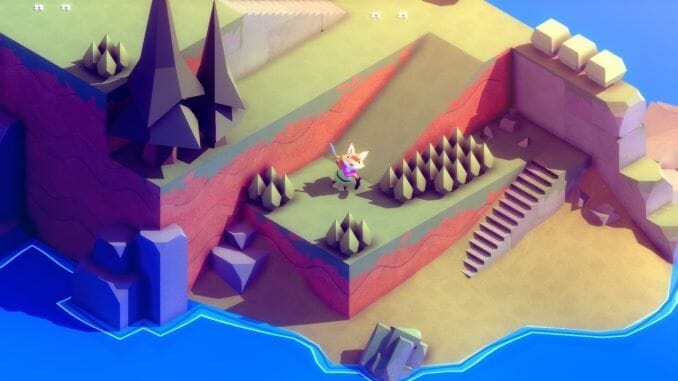
You know what’s just full of respect? Andrew Shouldice’s Tunic. That’s what. This one-man adventure jam doesn’t go easy with its puzzles, having faith that its players will be able to think their way through every tricky scenario presented to them. It also has a deep and overt respect for ‘80s Nintendo games, specifically the original Legend of Zelda; that’s evident not just in the game’s isometric view and general environment, but also in its in-game manual, which isn’t just some mystic, sacred text the adorable fox hero has to seek out, but also a recreation of an NES-era instruction booklet. Tunic sifts through the shared experiences of our gaming past to create something new and unique enough to exist outside the easy allure of nostalgia.—Garrett Martin
8. Vampire Survivors
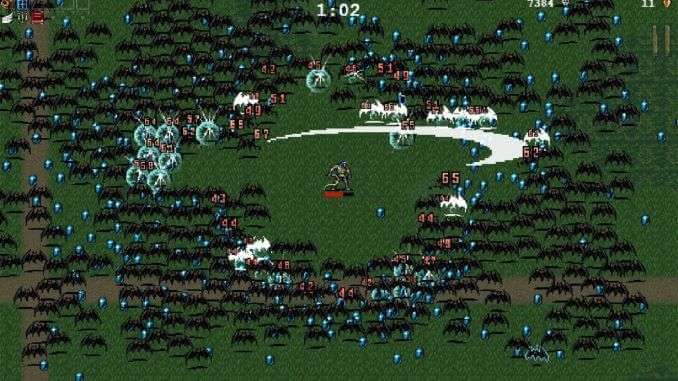
I blame it on the garlic, which obliterated enemies that dared step to me, and made me feel invincible. Of course I wasn’t, and fell mere minutes later, but that taste of what it might mean to utterly dominate the indomitable was more than enough to hook me on Vampire Survivors. Even as I write this blurb, my eyes are darting over to the game’s icon on my desktop, and I can almost hear it calling me. Vampire Survivors is a game that pretty explicitly digs its claws into everyone who plays it, but you have to be willing to embrace the cacophony that follows to be really happy with it. Inside that madness is a wonderful roguelike—an alchemical wonder, if you will—that obscures its depth and secrets with simple graphics and overwhelming odds. It is the easiest game to pick up and the hardest to let go of and, whoops, I’ve begun another run.—Moises Taveras
7. Neon White
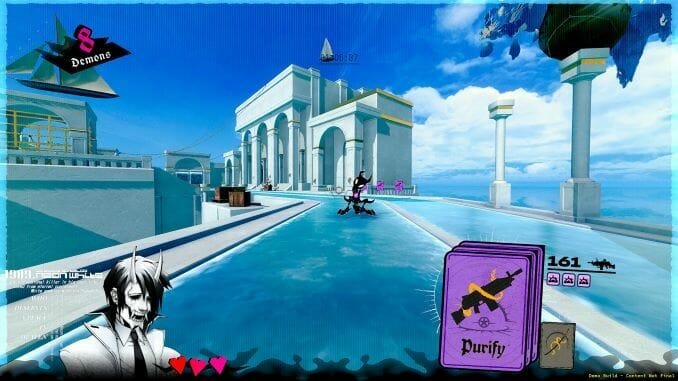
Neon White is pure motion. It might look like a first-person shooter—it’s in first person and you shoot a lot—but it’s all in service of the constant heedless rush at the game’s heart. Almost every time you shoot a demon it’ll be to acquire whatever kinetic ability it gives you, which you will almost immediately use to jump a little higher or rush forward a little faster or to literally grenade yourself dozens of feet into the sky to reach the next platform. You’re not here to shoot, per se, but to get from point A to point B as quickly as possible, and the shooting merely facilitates that. When you fully tap into its flow Neon White is about as exhilarating as videogames get, becoming an extension of your own nervous system as you effortlessly string moves together while trying to shave microseconds off your best time. And on top of its mechanical excellence it also has a story and cast of characters so well-written that I’m able to overlook its unfortunate reliance on an aesthetic and character tropes right out of anime. Neon White combines arcade elegance and extreme replayability with a genuinely thoughtful and surprising story, making it almost the best game of 2022 so far. It’s the only game that finally, fully broke Elden Ring’s hold over me; I haven’t set foot in the Lands Between since my first time sprinting through Heaven.—Garrett Martin
6. Signalis
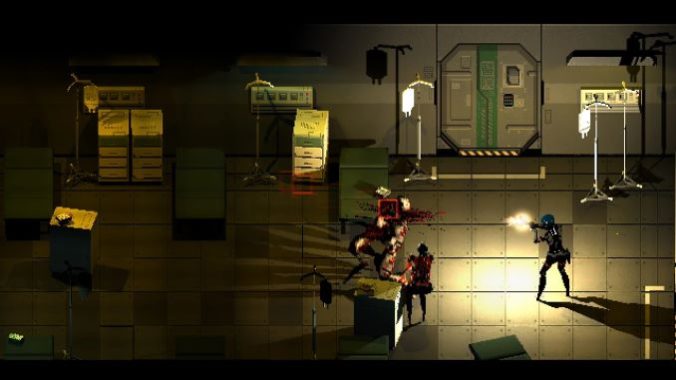
While Signalis fits into a larger trend of games that emulate PSX-era survival horror, its bold aesthetic choices and spellbinding storytelling help push it past its influences to create something singular. Its gameplay successfully channels some of the usual suspects like Resident Evil(2002) and Silent Hill 2 as your forage for keys, avoid Crimson Head-esque reviving zombies, and repeatedly backtrack to solve puzzles. However, its greatest selling point is that it has one of the most compelling videogame narratives of the year, its ruminations on death, identity, and accepting loss conveyed through cryptic symbolism and recurring cycles of pain. By constantly switching settings, artistic styles, and perspectives, it creates a disorienting headspace that emphasizes the confusion of its protagonist, slowly revealing the meaning of its recurring images until the horrible weight of it all comes crashing down. It’s a brainworm of a love story that I can’t get off my mind.—Elijah Gonzalez
5. Elden Ring
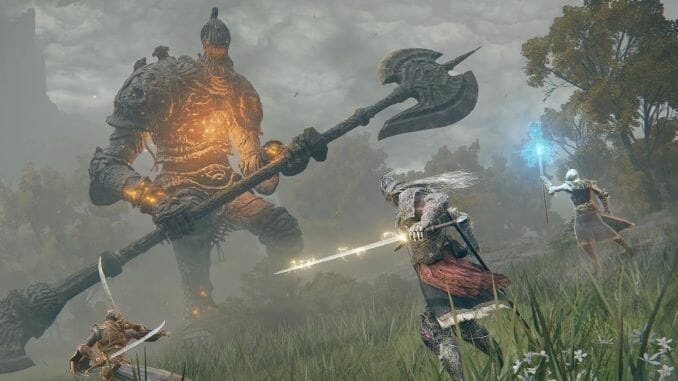
You’d be forgiven for thinking Elden Ring was the only game that came out this year. For a solid three months it seemed to be the only thing anybody talked about, wrote about, or even played. From Software blew its signature RPG formula up into one of the largest open world games in memory, which makes it more accessible than their earlier Souls games, but also even more mysterious and unsettling. Its massive, secret-filled world is clearly influenced by The Legend of Zelda: Breath of the Wild, but with the brutality and subtle approach to storytelling you expect from a Souls game. It might be a little too big, and devolves into a bit of a slog in the late game, but Elden Ring remains an almost unthinkable achievement. I’m dumped over 170 hours into it and still occasionally pop in again to look for any caves or ashes I might’ve overlooked. Elden Ring has a way of setting up camp inside your head and refusing to leave that few games can match.—Garrett Martin
4. Pentiment
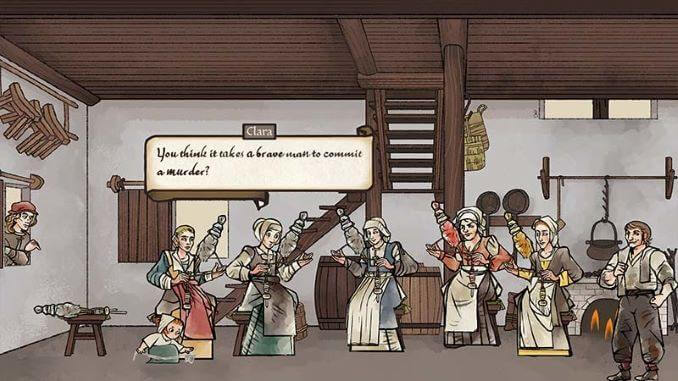
On every level, Pentiment’s illustrations, storytelling choices, and most clearly people are a mirror for the manuscripts that shape its characters’ lives. Whether they read or not, everyone is a repository of history, with their own verbal handwriting, quirks, and opinions on what the town of Tassing’s legacy should be. These human texts open up genuinely insightful questions about authenticity in art and what it will come to mean centuries later, as well as what to do when your history has been lost to you. It is a beautiful portrait of history that doesn’t limit itself from commenting on labor inequity, parental loss, or artistic hopelessness, all things the medieval and early modern art it draws from portrays so vividly. In bringing some of those stories to us today, Pentiment accomplishes the remarkable goal of being both clear-eyed about the medieval period’s faults, and sincere about its masterpieces.—Emily Price
3. Immortality
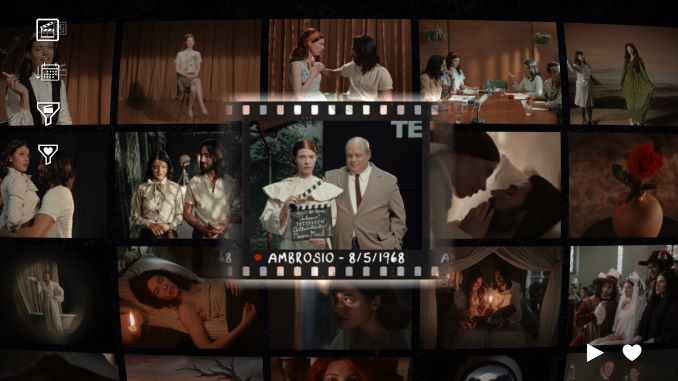
Sam Barlow has created his own micro-genre of games built around mundane video sources. First it was the police interrogation videos of Her Story, and then the video calls of Telling Lies. With Immortality, Barlow and his team go fully cinematic, presenting a mystery about a forgotten actress from the late ‘60s who disappeared after her three starring roles went unreleased. The footage from those lost films resemble different styles of film from two different eras, and the interface is set up like an old Moviola editing desk. You’ll sort through her short film career looking for insight into why she vanished, clicking from one clip to another, including outtakes and talk show appearances. Over time the mystery takes an unsettling turn into horror, but Immortality doesn’t lose site of its themes—voyeurism, the power of sex, the inherent exploitation of movies, the specific exploitation and power dynamics of the director/actor relationship, etc.—in chase of scares.—Garrett Martin
2. Citizen Sleeper
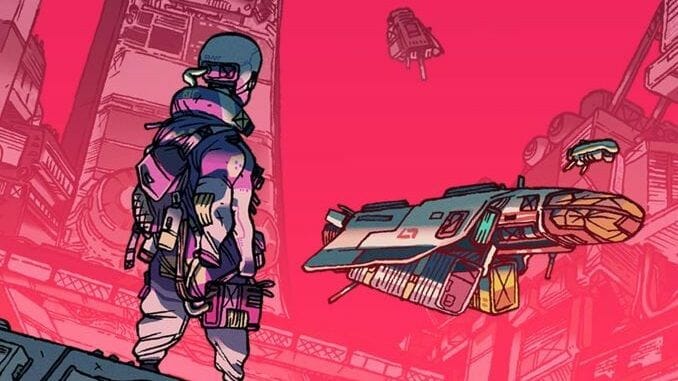
You can think of Citizen Sleeper as a sort of digital board game set in a sci-fi dystopia beset by end-stage capitalism and all the rampant dehumanization that entails. It’s a game about work and death where the only levity comes from the relationships we make with others—yes, the friends we made along the way, but not nearly as banal or obvious as that sounds. It questions what it means to be a person in a system that inherently subjugates personhood to corporations and wealth, and it probably won’t surprise you that the answers it lands on aren’t always the most optimistic or uplifting. Here at Paste Cameron Kunzelman described its “melancholy realism” as part of a trend alongside other story-driven games that are largely hostile to the dominance of capitalism, and it echoes the impossibility of thinking seriously about this medium, this industry, and, well, every aspect of society today without discussing the impersonal economic system that drives it all. It’s a heady RPG that respects your time and intelligence, and one of this year’s must-play games.—Garrett Martin
1. Norco
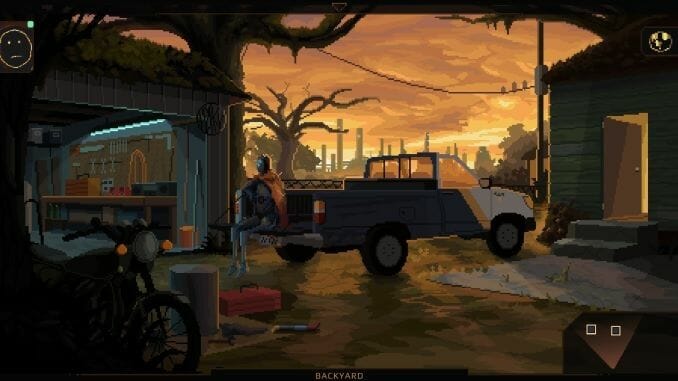
As a Southerner I don’t really trust anybody to write about the South unless they, too, are from here—or at least have lived here long enough to truly understand what makes it great and awful in equal measure, and how the ways in which the South is actually fucked up often diverge from the ways in which outsiders think it’s fucked up. Norco, a smart narrative-driven game about the unique ways in which institutions like religion and big business have exploited the South, its people and its land throughout history, is clearly the work of people who understand this region and its fundamental defects. It’s an unflinching, occasionally surreal glimpse into an only slightly exaggerated version of Louisiana, with its mythical and allegorical flourishes only highlighting the aimless mundanity and real-life degradations of the modern South. If you only play one game from this list, make it Norco.—Garrett Martin